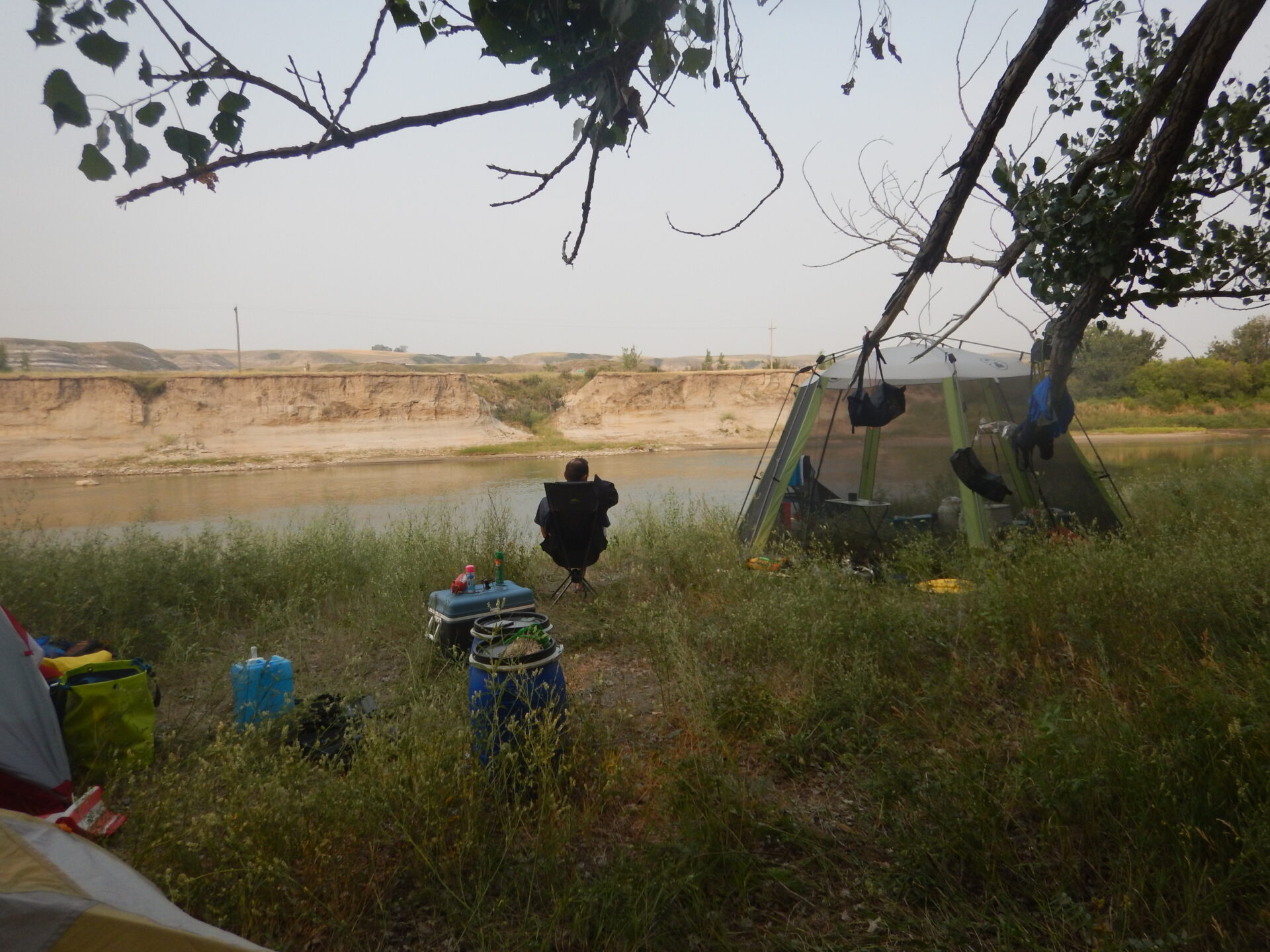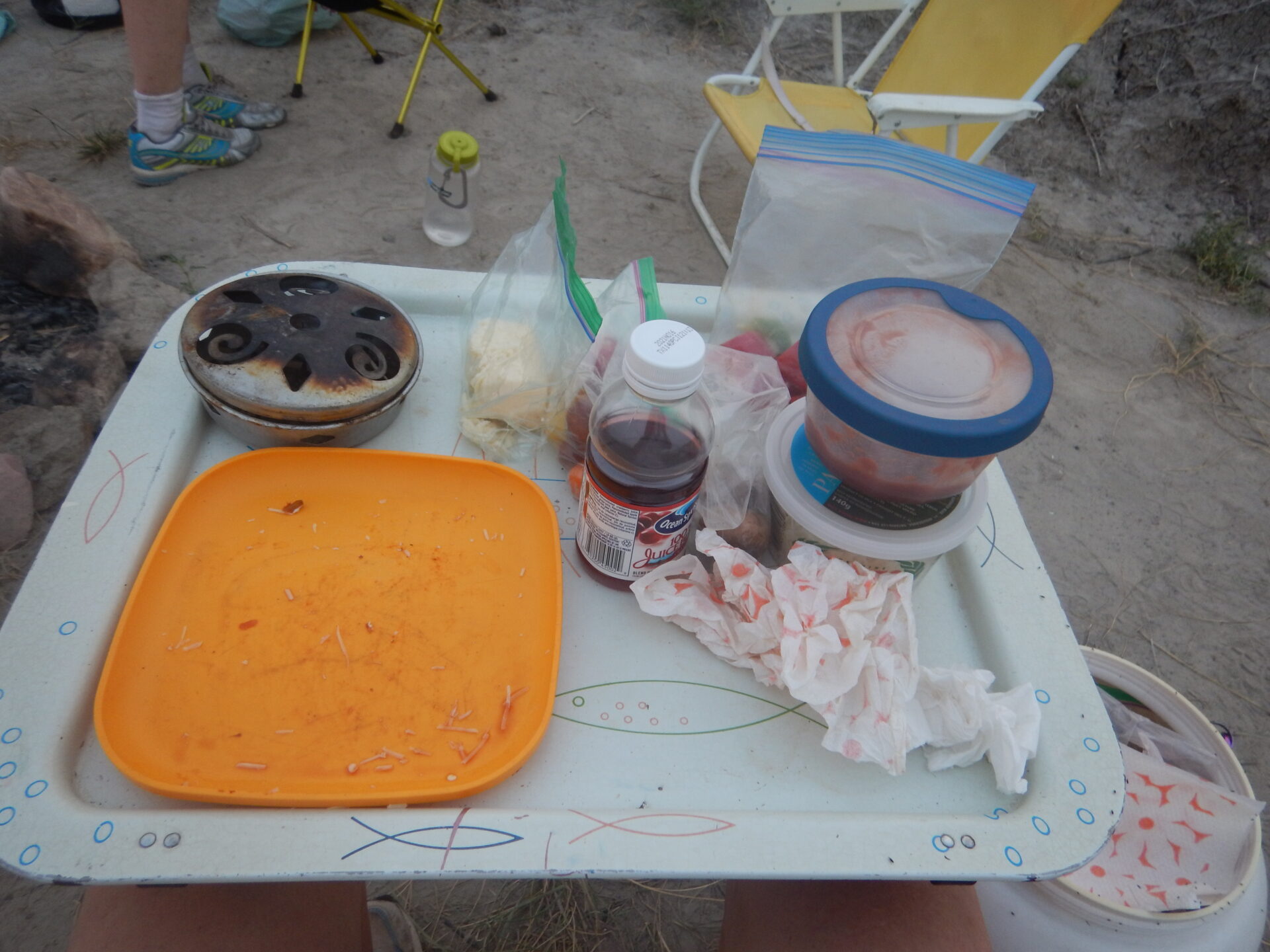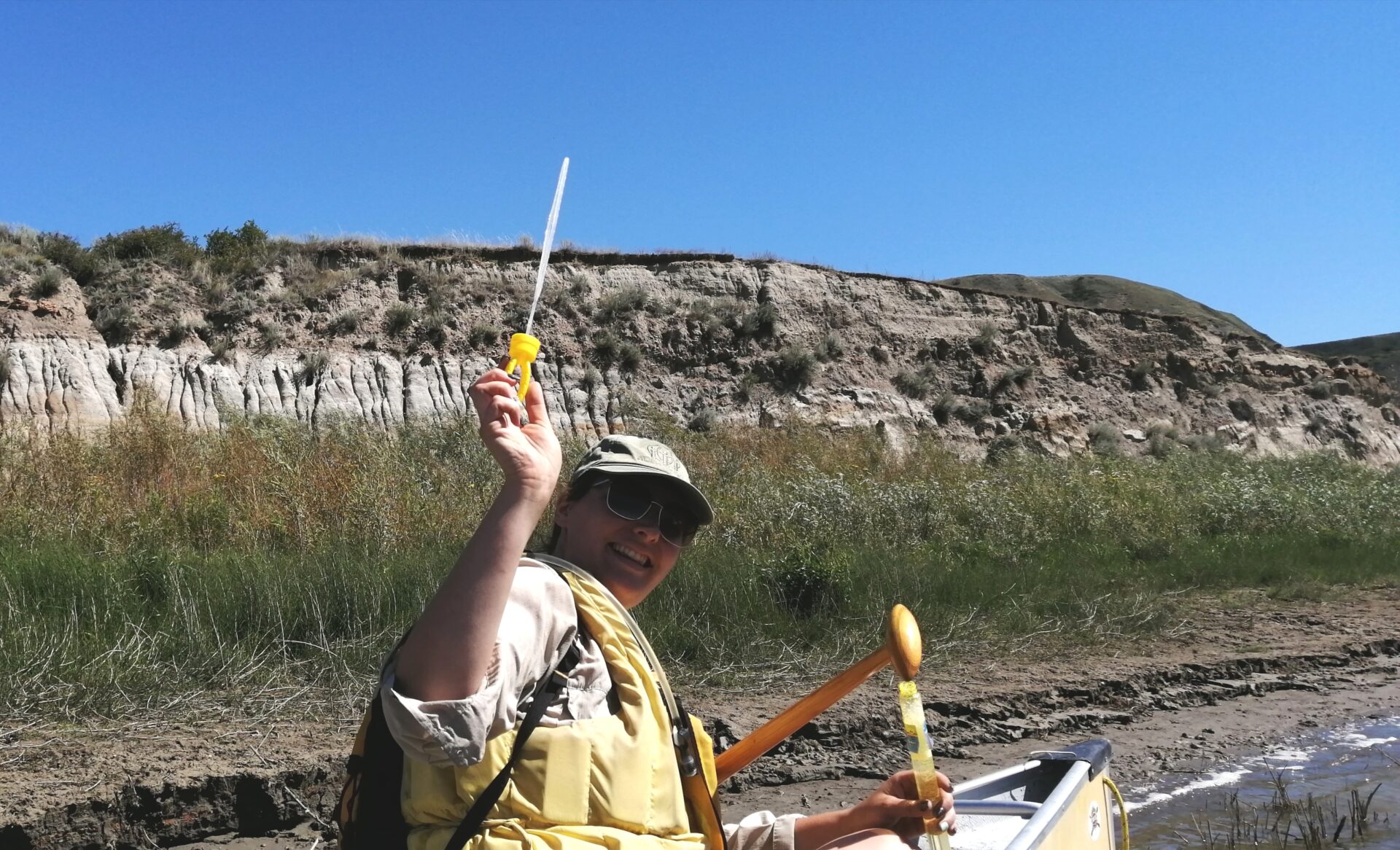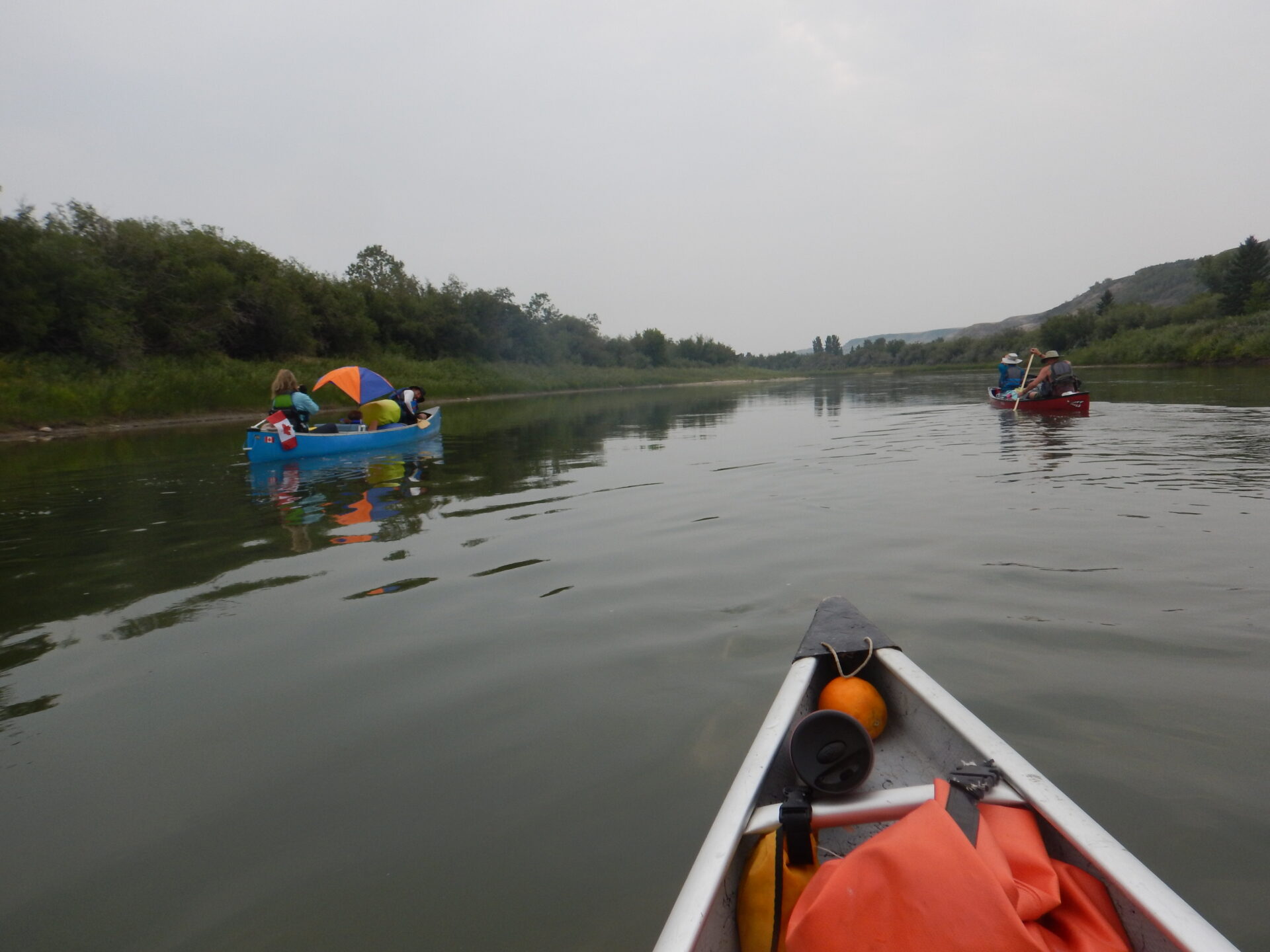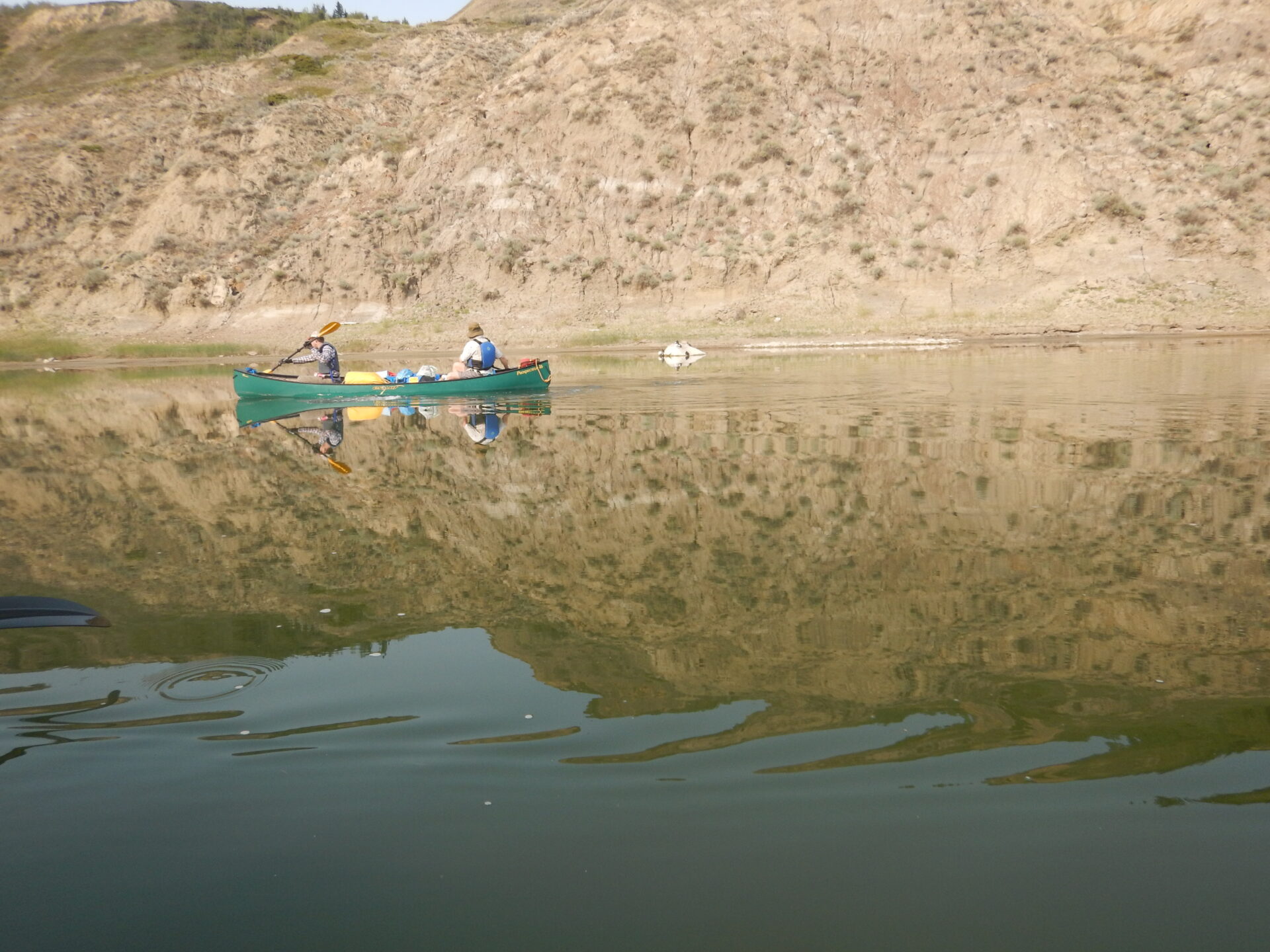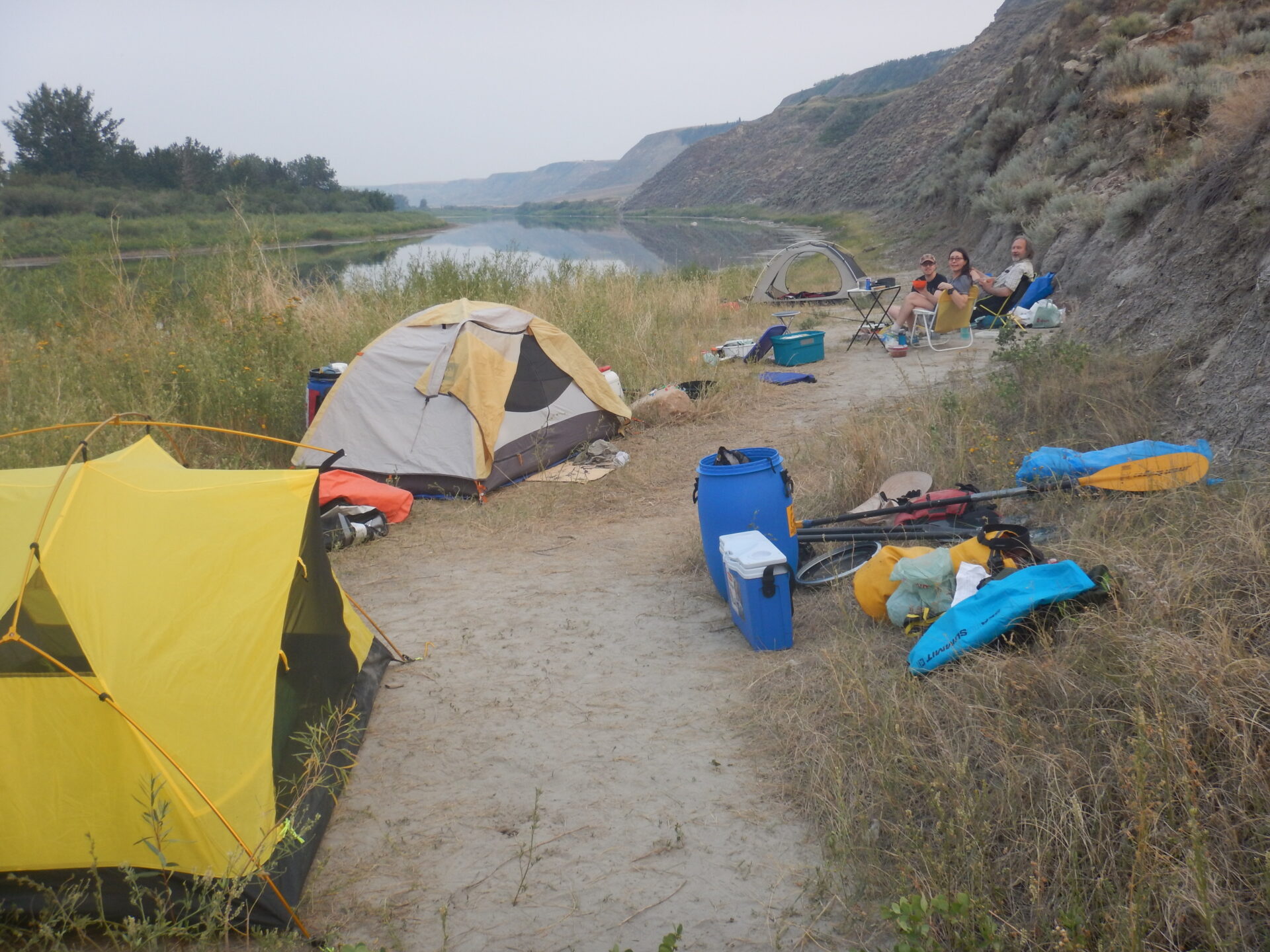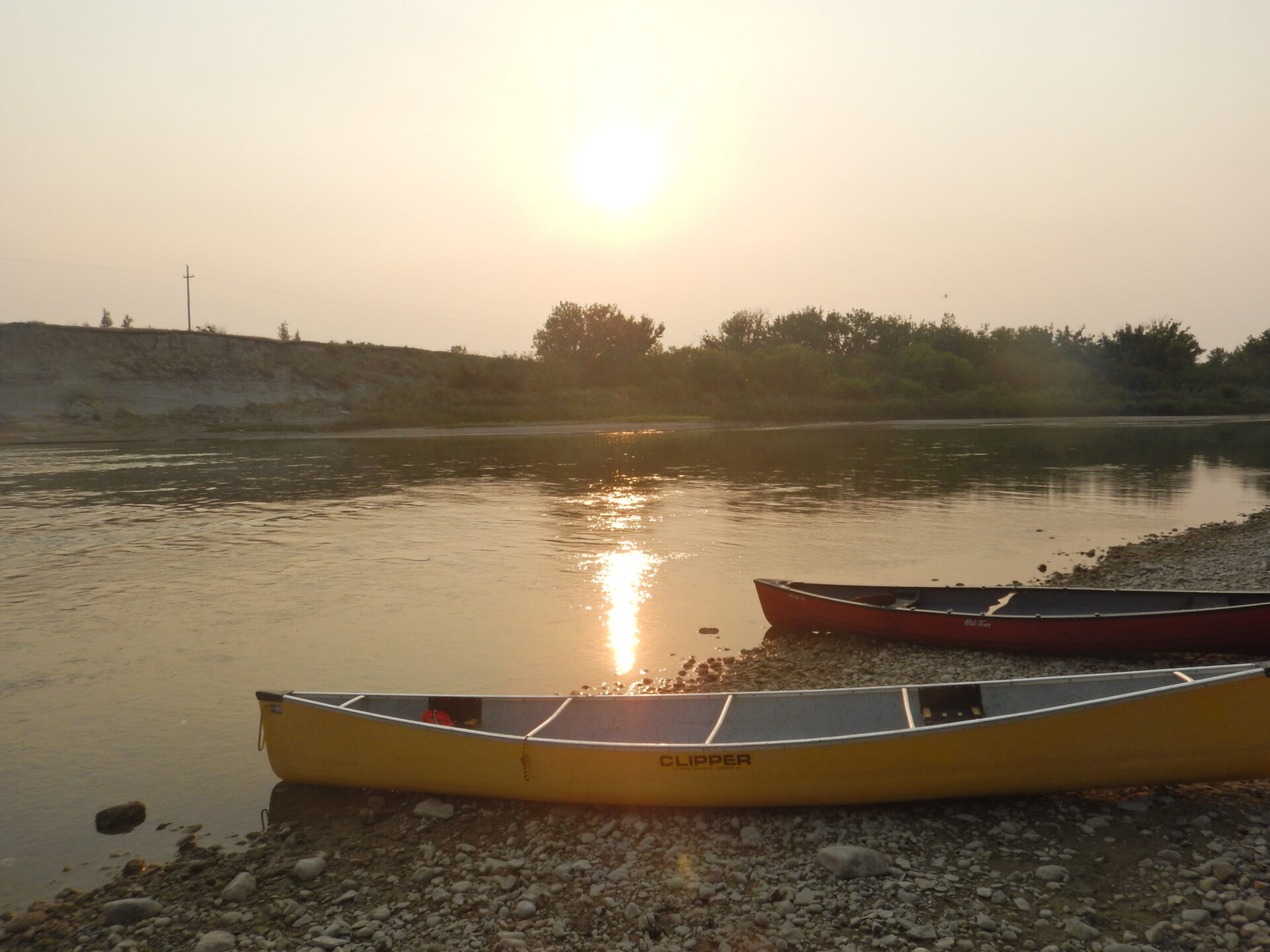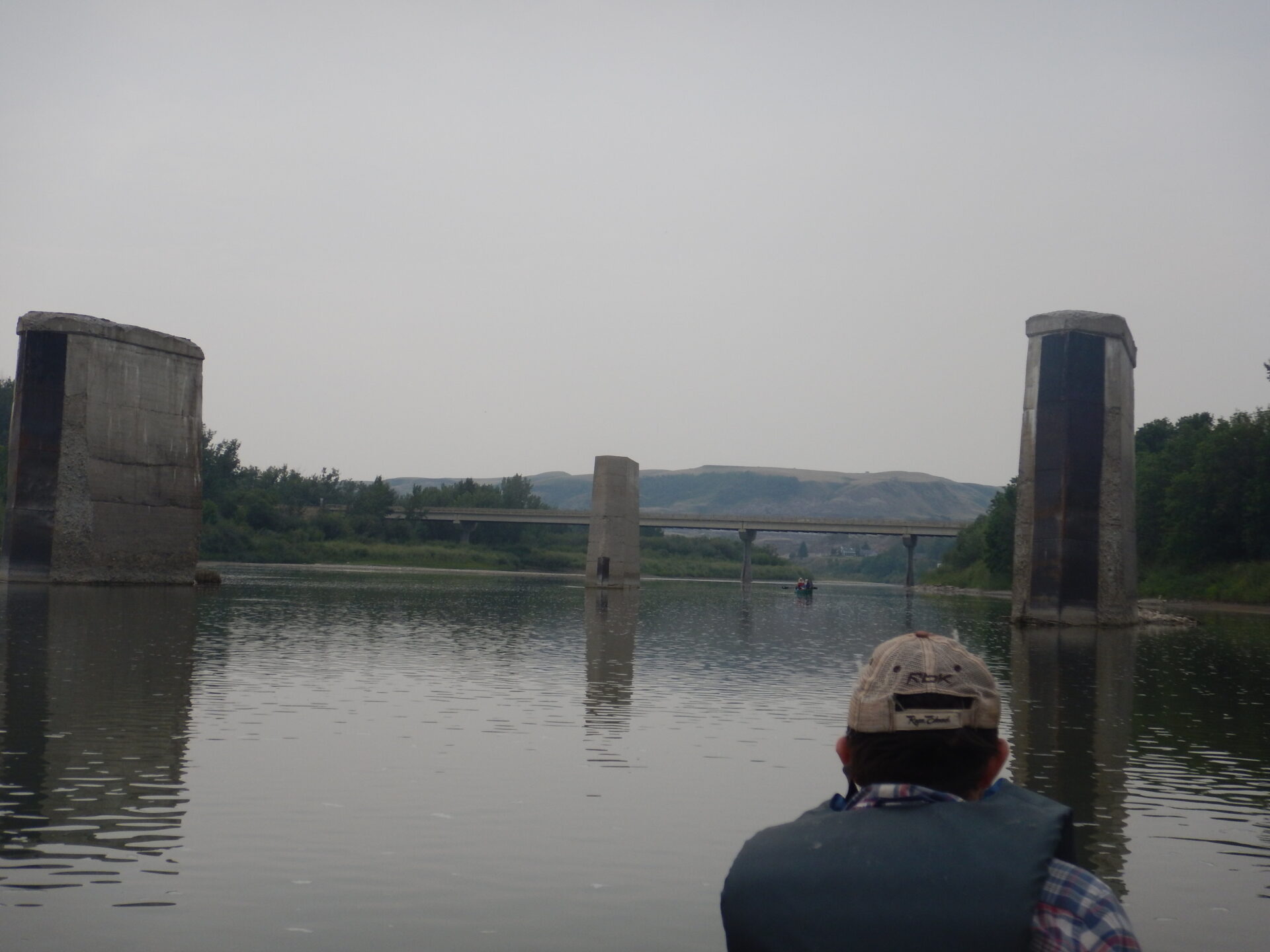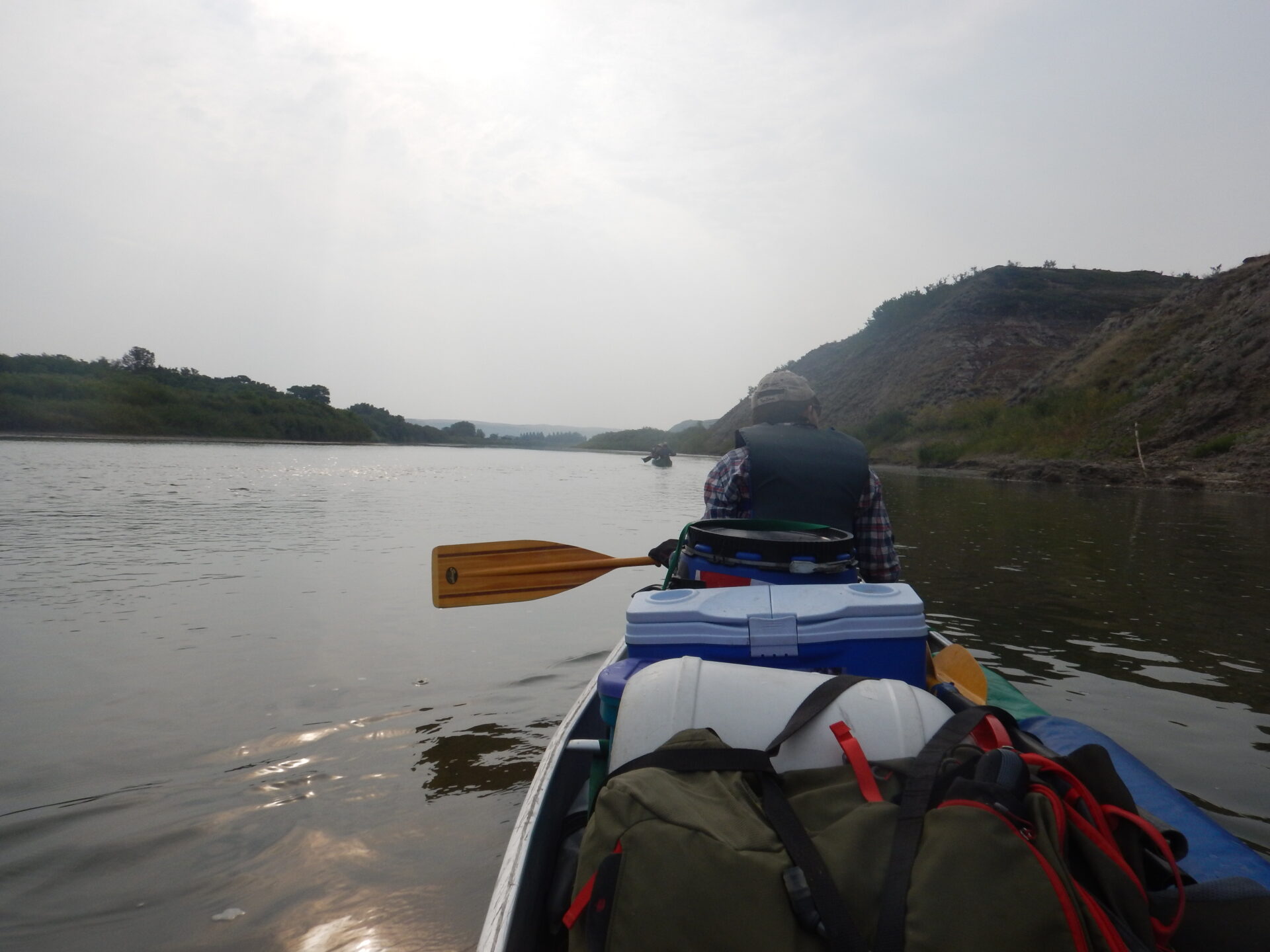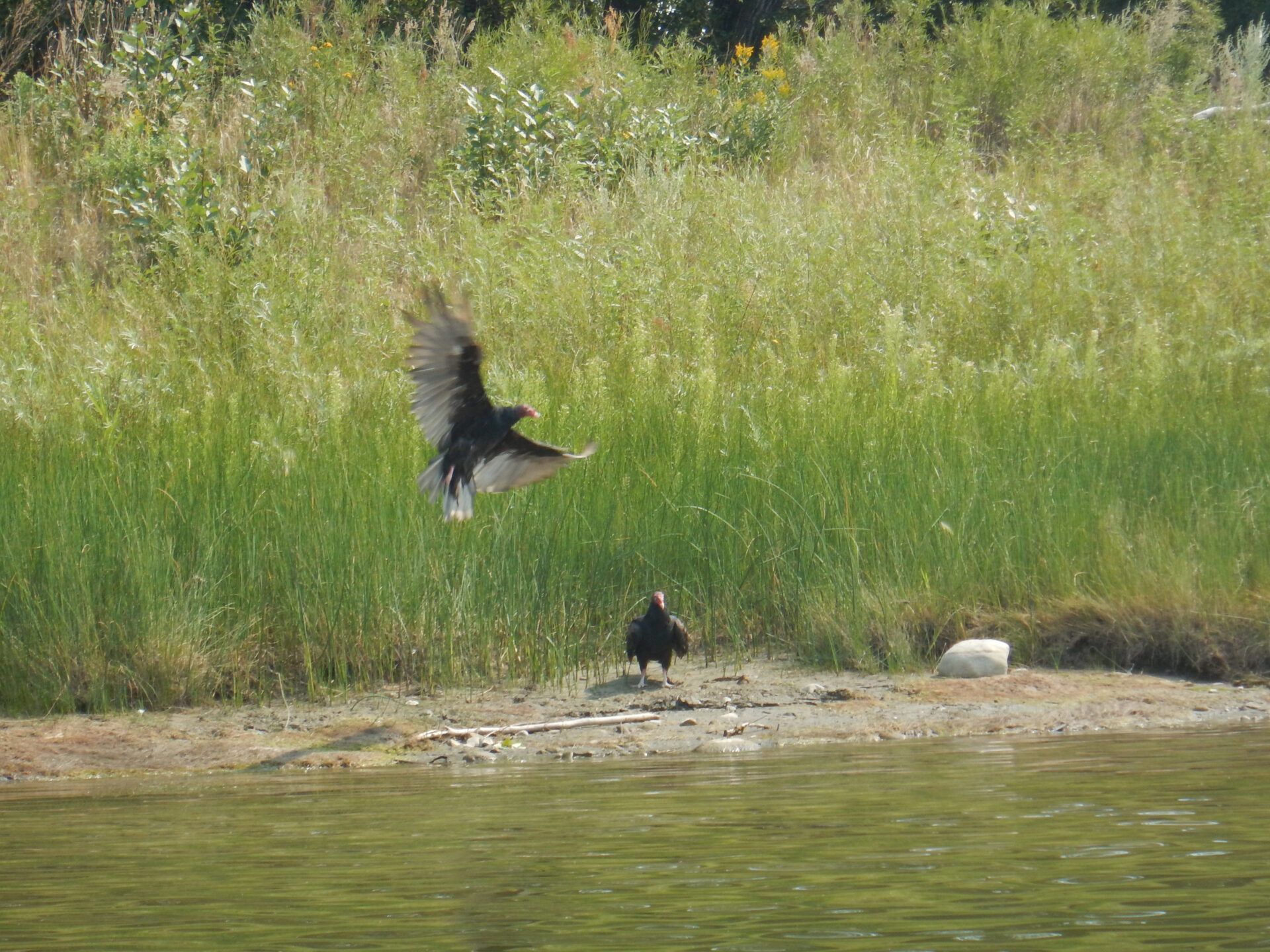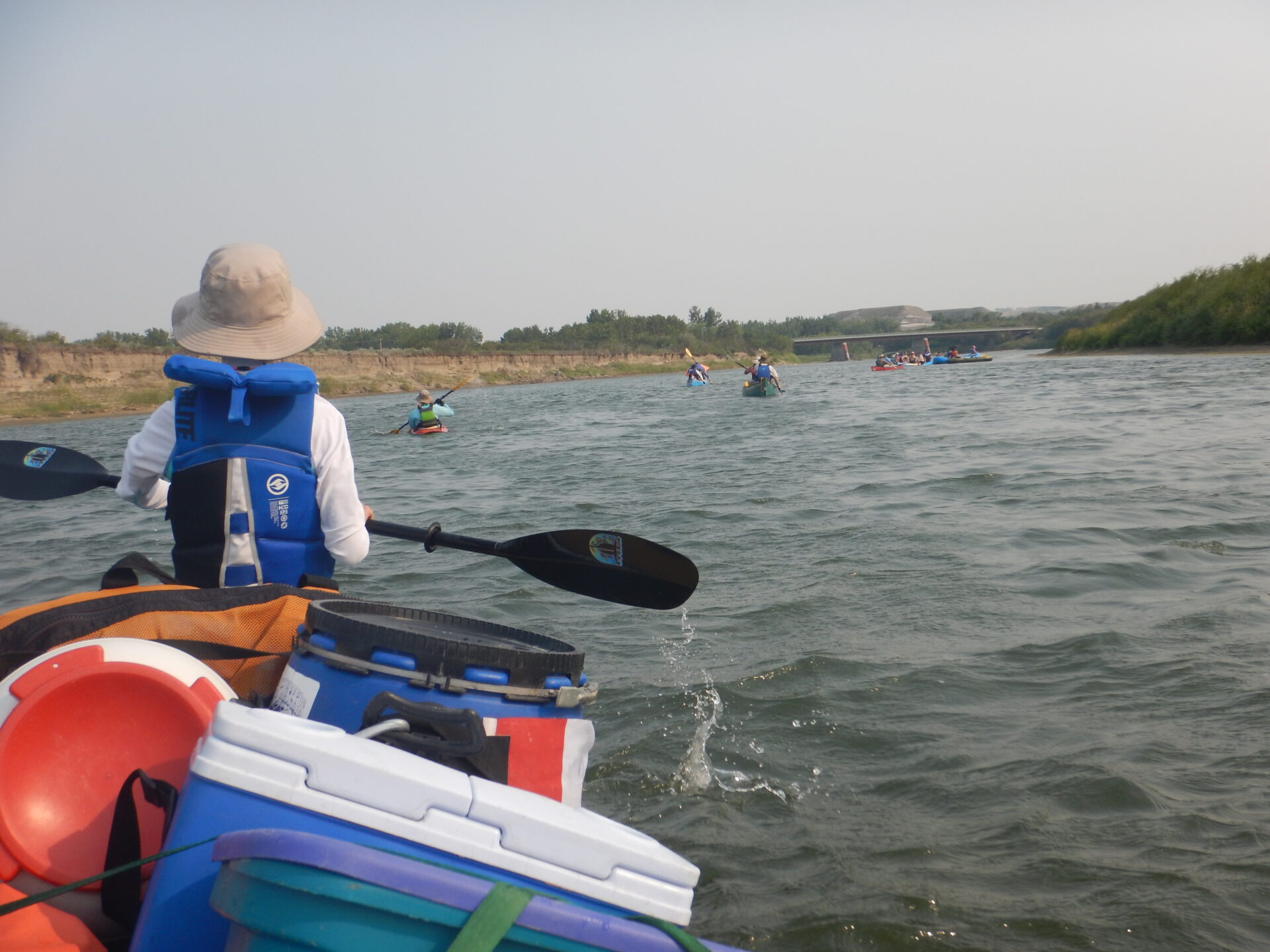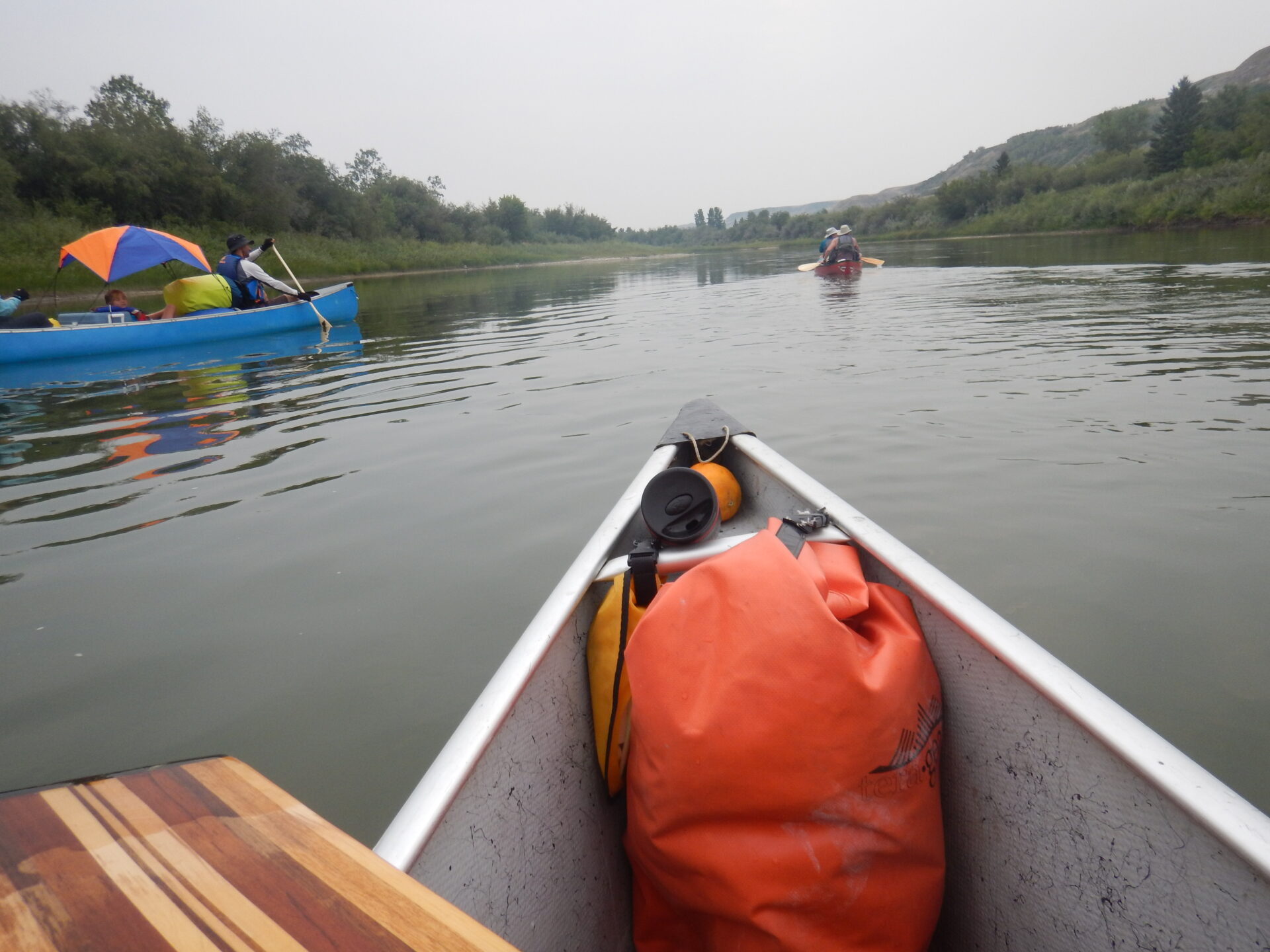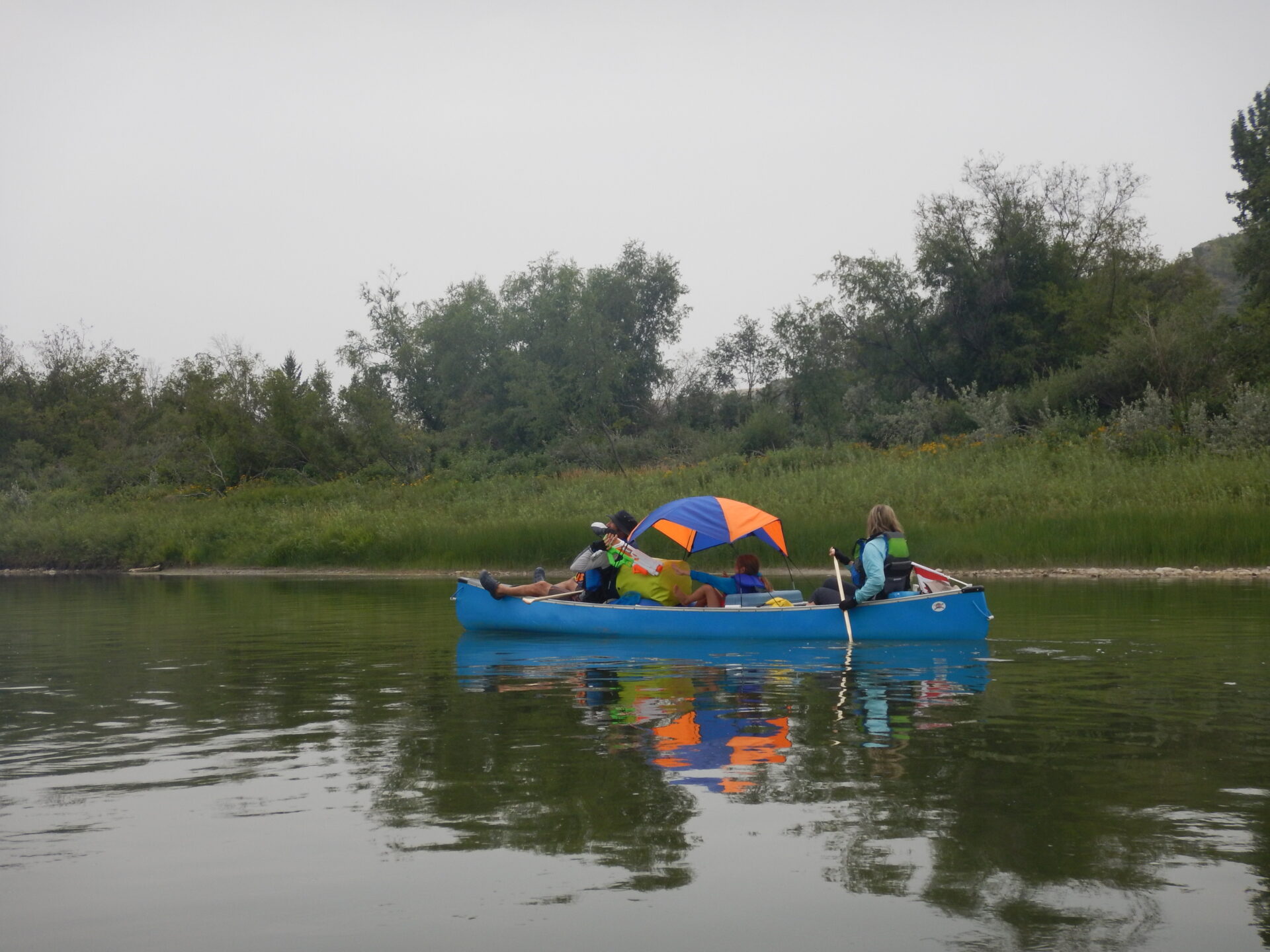How to Paddle the Red Deer River
By Kevin Gedling
A canoe launches into the cool, brown waters of the Red Deer. A paddler jumps in, bags and cooler packed, tied down and ready for a flowing adventure amongst grasslands and badlands. Increasingly popular, a trip down the Red Deer River from one of several upstream put-ins to the mighty Drumheller Valley is becoming a bucket list experience for many Albertans. As it should be. The waters of this epic valley flow past some of the province’s most spectacular wildlands and a number of pleasant hidden-gem parks that make a great place to visit.
Meet Laura! She’s a local rancher and paddler. Both her and husband Mike are avid Red Deer River paddlers and prominent members of the Bow Waters Canoe club, one of Alberta’s best established paddling organizations. Each year for at least the last four or five—her and her partner plan and execute a paddling trip on the Red Deer River.
Like a well-oiled machine, Laura and Mike have their system down pat when it comes to enjoying the river and doing it safe. They’ve been doing it for years and love taking out their friends from Calgary and newcomer paddlers to the club.
Laura stresses the following points in getting your own paddling adventure together
- Decide how long you want to go for. Is it a few nights or more? Decide your plan well in advance and where you start from.
- Packing takes time. You’ll need to bring a lot of things with you like the tent, sleeping bags, food, water, and clothing for the time you’re out. You’ll need it in dry bags and to practice packing it and tying it down. They took an hour or more each day for two weeks in advance of their trip to pack and prepare. The river LOOKS gentle, but she’s seen plenty of capsized canoes from newbie beginners who didn’t quite prepare. And seen their stuff floating on by in the aftermath!
- Expect changeable weather and prepare for it. Perhaps a surprise, but it shouldn’t be—parts of the Red Deer can become very windy and challenging for paddling. Also tough is paddling in the scorching hot noonday sun in the peak of summer. She recommends a wide brimmed hat, sunscreen for sure, chapstick and innovating for sunshade—like using an umbrella. And a side tip.
- Experienced river paddlers often bring things to make the trip just a little more comfortable—niceties that make the difference when you’re out on the river for several days. Things like seats or cushions, better quality tents, a proper cooler and really good campfood as opposed to the freeze dried stuff that often makes it on backcountry trip.
- Last—bring things that can have more than one purpose. A dry sack that doubles as a pillow, or a cooler that doubles as a seat or a gearbox. Packing efficiently and securely will go a long way to a comfortable and enjoyable paddle.
Where to start from: There are several places along the river to put in from and paddle. Laura’s favourite is from the Tolman Bridge—one of several provincial park access points on the river. From here there are campgrounds on both sides and a gentle, slow moving river to contend with. Also popular is the day-use area at Dry Island Buffalo Jump Provincial Park, east of Trochu. While it’s quite a spectacular place to start—there’s a couple of cruxes here. In wet weather, the access road can be a concern and if you’re too early or late in the season, if the gate is closed, it’s a long, long walk down to the launch. And the river here can get pretty windy. But it’s a stunning park and a great place for a hike and a picnic!
If you’re looking for longer trips, you can start further upstream from places like McKenzie Crossing and Content Bridge, but Laura advises that the river can be swifter and faster in this section. Potentially best for experienced paddlers!
And don’t forget—you’ll need a shuttle to get you back and forth from your car and the starting and stopping points you use. Laura uses the Lynch Ranch http://town.trochu.ab.ca/business-directory/3466/lynch-ranch-canoe-rentals-and-shuttle-services/ in the Trochu area.
Other provincial parks worth a stop: Bleriot Ferry Provincial Recreation Area is a long time favourite for locals—and Laura’s been bringing family here for years. Even for non-paddlers, a camp amongst the huge cottonwoods is a huge enjoyment. Mark it on the list and nice to know, this park is expanding in size! (but it’s still just a nice quiet haunt for car campers along the river!) Midland Provincial Park doesn’t have any place to land a canoe. But, when you are done, you can always circle back here for a hike or a visit to birding hotspot McMullen Island (another badlands local favourite!).
Where to get out?
What…the trip’s over? All good things come to an end! There’s two recommended places to disembark the river. Newcastle beach in Drumheller itself is central and presents the opportunity to end your multi-day trip with a pint downtown and a nice hot shower in one of several good hotels. The other, which extends your trip by nearly a full day, is to continue downstream to the Dorothy area. This is a nice option if you want to start and finish in the wildest of badlands and get a glimpse of the old ghost town remains of the former community in this spot.
Parting thoughts:
A paddle down the Red Deer River is a classic prairie paddling experience, with lengths of trip and opportunities for all abilities with the proper planning and precautions taken. Here are some good places and resources to get your information (amongst many) before setting out this summer! · What to take—an essential gear list by the Ceyana Canoe Club (in Edmonton) Ceyana Canoe Club.
- Find Mark Guide for Alberta Paddlers, Vs. 3. Copies can be found in public librairies in Alberta and purchased online https://paddlealberta.org/product/marks-guide-for-alberta-paddlers/
- Joining a canoe club near you and review their website/information from past paddlers who shared their experience in member chats and forums.
This is not the entire list of things you should do to prepare for a trip on the Red Deer River, we think this will get you pointed in the right direction. Remember: you’re responsible for your own safety (and fun).
